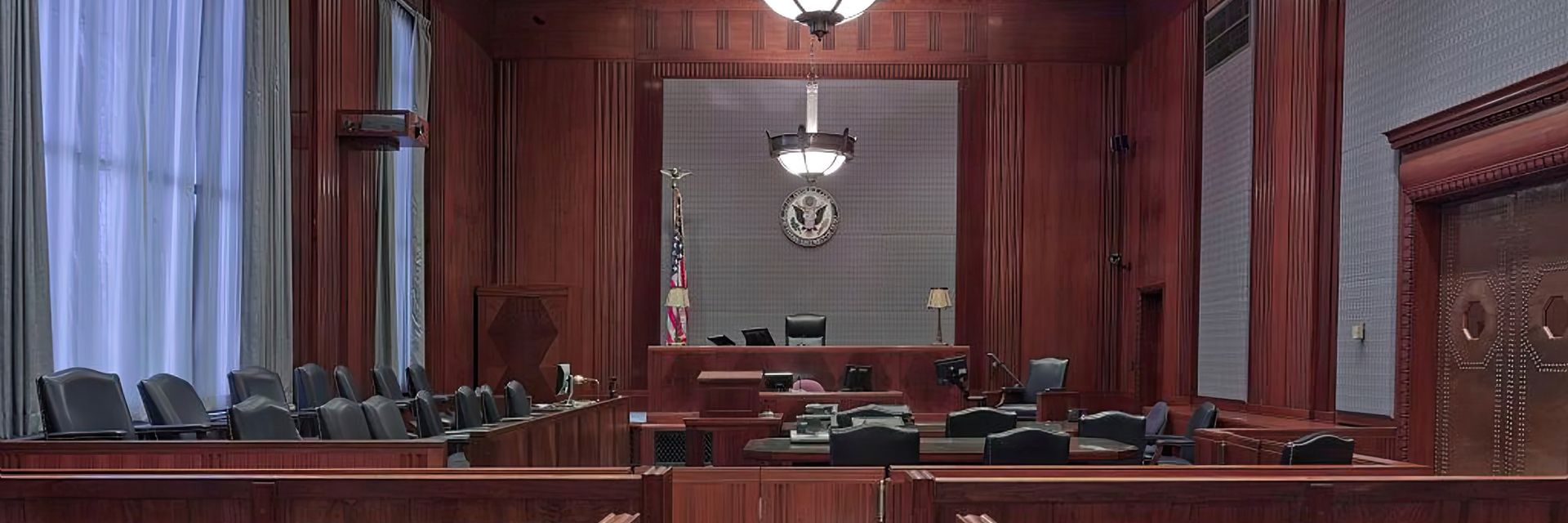Whether it’s murder while sleepwalking or diminished capacity from PMS, history is rife with unusual – and sometimes just plain bizarre – courtroom defenses.
◊
When tasked with representing a client, a defense attorney makes a number of significant choices. The most critical to arguing a case is establishing the nature of the defense strategy itself. Arguments claiming a homicide was accidental, was committed in self-defense, or that a client was insane when the crime was committed are familiar.
But in the history of the modern justice system, there have been a plethora of, well, highly imaginative defenses presented in court. Collectively, they have broadened our understanding of what culpability looks like and the lengths trial attorneys will go to defend the (sometimes) indefensible.
The Sleepwalking Defense
Sleep, dreams, and the nocturnal brain are not without their areas of mystery. Sleepwalking, which is categorized as a parasomnia, results from an abnormal transition from NREM to REM sleep. You might think that committing homicide while asleep is so far outside the norm as to seem implausible. But it happens--and there’s a name for it: homicidal somnambulism.

(Source: Wikimedia Commons)
There have been some 70 documented cases of homicidal somnambulism, several of which are featured in the MagellanTV documentary Sleepwalkers Who Kill. Perhaps the most striking case covered in the film is that of a Toronto man, Kenneth Parks. In 1987, he was charged with bludgeoning his mother-in-law to death and attacking his father-in-law. Parks claimed he was not guilty, saying that he was sleepwalking when he drove 15 miles to his in-laws’ home and committed the acts. When he awoke, Parks asserted, he was in his car covered in blood, and he immediately drove to a police station. Amazingly, Parks was exonerated on a sleepwalking defense.
For more on homicidal somnambulism, check out the MagellanTV documentary Sleepwalkers Who Kill.
Here’s a recap of three additional cases of homicidal somnambulism.
Isom Bradley
In 1925, Texas resident Isom Bradley was accused of intentionally shooting his girlfriend, Ada Jenkins, a claim he denied. Bradley testified that, as he and Jenkins were preparing for bed, Bradley was concerned about a threat made against him from an enemy. To calm his mind, he slept with a pistol under his pillow. Hearing a noise in the night, he shot at a perceived intruder – but when he turned on the light, he found Jenkins dead in a pool of blood. Bradley was initially convicted, but the case was later appealed and reversed. His attorneys argued that the jury had not been made aware of the possibility that Bradley was asleep at the time of the killing.
Brian Thomas
In July 2008, Brian Thomas strangled his wife while sleeping in their camper. Upon finding his wife dead, a bewildered Thomas notified the police, reasoning that he must have committed the act himself. Thomas, who had a history of sleepwalking, claimed that he had no memory of the event. Instead, Thomas reported that he was having a nightmare in which he was fighting off a male intruder; in his somnambulistic state, he attacked his wife instead. Thomas was found not guilty and released from prison.
Randy Herman Jr.
In 2019, Randy Herman Jr., a resident of West Palm Beach, Florida, was convicted of stabbing to death his roommate, Brooke Preston, and sentenced to life in prison. There was no clear motive established for the crime. In court, Herman’s defense attorneys had argued that he had been sleepwalking at the time of the killing, but pled not guilty on his behalf by reason of insanity.
In 2021, Herman filed a motion to have his conviction vacated; he took issue with the insanity claim. “Had counsel conducted an adequate investigation,” Herman wrote, “he would have discovered that sleepwalking should have been raised under the legal defense of automatism.” Herman is currently still in prison; should he be granted a new trial, he plans to represent himself.
Sleepwalking as a defense for criminal acts remains highly controversial. Additional research into the sleeping brain will no doubt continue to illuminate the nebulous state that exists between wakefulness and sleep – a state in which the sleeper can potentially commit the most grievous of acts.
The Owl Defense
Birds rarely come up in murder trials; a notable exception is the case of Michael Peterson.
In 2001, a charming novelist, father, and aspiring local politician was accused of bludgeoning his wife Kathleen to death, and throwing her body down a staircase in their North Carolina home. Peterson pled not guilty, claiming that Kathleen, woozy from wine, must have simply slipped on the staircase. The investigation, however, raised doubts about his innocence. Police discovered that Peterson engaged in extramarital relationships with men and actively sought the services of male escorts. (Peterson’s defense claimed Kathleen was accepting of his bisexuality.) It also came to light that a female neighbor from Peterson’s past had been found deceased at the bottom of a flight of stairs.
.jpg)
(Source: Wikimedia Commons)
Peterson was found guilty in 2003, but his attorneys immediately filed motions for a new trial.
As Peterson sat in prison, an attorney (and Peterson’s neighbor), T. Lawrence Pollard, developed a new theory. While inspecting an SBI crime lab report, Pollard spotted a microscopic feather discovered with Kathleen’s body. Pollard also claimed the report showed she had additional feathers entwined with pieces of hair in her left hand.
The night she died, Pollard theorized, Kathleen was attacked by an owl outside the home, which sent her fleeing indoors. Disoriented and bleeding, she tumbled down the stairs. As ludicrous as the claim may sound, barred owls were commonly found in the tree-filled neighborhood. Not only that, but Kathleen’s death occurred in December – when owls are mating and tend to be particularly territorial. Significantly, Kathleen’s scalp wounds did look as though they could have been made by sharp owl talons.
The “Owl defense” never made it into the courtroom, though Peterson’s attorneys had planned to present it in Peterson’s next trial. Instead, in 2011, a judge vacated his conviction as a result of “materially misleading” and “deliberately false” testimony from a blood analyst. Peterson later took an Alford plea, admitting to voluntary manslaughter. He was sentenced to time served. While the theory Pollard developed about the alleged offending owl was laughed off by critics, it remains a memorable aspect of an already twisty American murder story.
The PMS Defense
The “PMS defense” argues that a defendant was not fully culpable for a crime due to the mitigating impacts of premenstrual syndrome. The decision to utilize the fluctuations of a woman’s hormones as an evidentiary basis for guilt or innocence is a fraught one. After all, historically, women have long been unjustly dismissed or maligned due to erroneous beliefs about menstruation.

Frauen Diskriminierung Menstruation (Credit: Vulvani via Wikimedia Commons)
Perhaps the most obvious objection to a PMS defense: The experience is so commonplace, it hardly seems to rise to the level of diminished capacity. It gained widespread attention when three such cases occurred in short succession in 1981.
Sandie Smith
Sandie Smith, a 29-year-old bartender from East London, was arrested for threatening to stab a police officer. At trial, her attorney posited that his normally even-tempered client transitioned every month “into a raging animal.” Therefore, he suggested, she was not fully responsible for her actions. Smith was given three years probation.
Christine English
The day following Smith’s trial, 37-year-old Christine English, who had pled guilty to “manslaughter with diminished responsibility” after killing her boyfriend with her car, was discharged from a Norwich, England, court. A mitigating factor in her case was also PMS.
Kumari Chandra
In another 1981 case, Nasirabad, India, resident Kumari Chandra was convicted of pushing three children into a well. Two of the children survived, while one drowned. Chandra’s attorneys argued that Chandra regularly suffered from the impacts of PMS, which led to fits of anger.
However, in India, there is no established statutory defense of premenstrual syndrome. In 2017, her case was revisited; she was acquitted due to insanity from extreme PMS. According to the Rajasthan High Court, “despite the lack of domestic jurisprudence, the accused nevertheless has the right to plead this defense.”
While the suffering many women endure as a result of PMS can’t be dismissed, the PMS defense remains a complicated and contentious matter.
The Twinkie Defense
The phrase “Twinkie defense” arose during the trial of Dan White, charged with the murders of San Francisco Mayor George Moscone and Supervisor Harvey Milk at City Hall on November 28, 1978. White, a deeply conservative former supervisor whose requests to rescind his resignation were turned down, could not have been more diametrically opposed to Moscone and Milk in politics. Both men were liberal, and Milk was the first openly gay San Francisco supervisor. Though not proven, public opinion argued that White’s outrage over Milk’s homosexuality factored into his crime.

Harvey Milk in 1978 at Mayor Moscone’s desk (Source: Wikimedia Commons)
White’s attorneys argued a diminished capacity defense. At trial, psychiatrist Martin Blinder testified about White’s worsening mental health leading up to the murders. According to Blinder, White had developed a habit of eating junk food – a sign of his depressive state. White was convicted of voluntary manslaughter rather than the more serious charge of first-degree murder.
But, while the jury may have bought the diminished capacity argument, Twinkies weren’t mentioned specifically at the trial. Instead, the media coined the phrase which, for better or worse, stuck. The “Twinkie defense” has since evolved into a catch-all term for defenses in which the accused blames his or her actions on the consumption of a particular item or substance – like cough medicine, caffeine, or a cream-filled treat, as the case may be.
Affluenza Defense
The term “affluenza” was coined by a psychologist who testified at a 2013 trial for wealthy Texas teenager Ethan Couch, charged with four counts of intoxication manslaughter and two counts of intoxication assault.

Ethan Couch (Source: U.S. Marshal’s Service)
On a summer day in suburban Texas, Couch crashed into a stalled vehicle, killing the owner of that vehicle and several individuals who had stopped to assist the motorist. Couch was found to have a blood alcohol level three times the legal limit and tested positive for diazepam and marijuana.
At trial, psychologist G. Dick Miller used the term “affluenza” to describe a mental illness that results from growing up in privileged circumstances. In certain individuals, Miller suggested, sheltering from real-world responsibilities results in the inability to understand consequences. In part due to this testimony, Couch evaded a much harsher penalty, ultimately being sentenced to 10 years probation.
In what may be the most convincing evidence to support the affluenza theory (should it be worthy of one) – and tossing proverbial salt in the wounds of the victims’ families – a video surfaced in 2015 showing Couch intoxicated at a party. He and his mother were detained in Puerto Vallarta, Mexico, and Couch was sentenced to two years in jail for probation violation. After being released in 2018, he violated his probation a second time.
And Justice for All?
 (Source: Wikimedia Commons)
(Source: Wikimedia Commons)
In criminal law, the facts of a case are established by the presentation of exculpatory evidence via witnesses and expert testimony. Nevertheless, every case ultimately becomes a match of competing narratives. Whether an argument for innocence is deemed implausible, absurd, or grounds for reasonable doubt, that’s for juries to decide. The above cases may seem like true outliers in the justice system. But if recent crimes are any indication, there will be many more weird and wild defenses on the docket.
Ω
Matia Query is a freelance writer and the editor of BookLife, the indie author wing of Publishers Weekly. She lives in New York’s Hudson Valley.
Title Image Source: Pixabay

